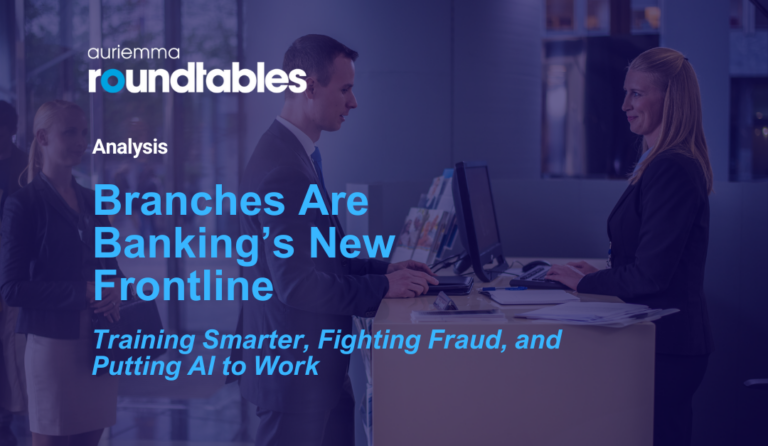June 28, 2023
Using Artificial intelligence in P&C Claims Operations
P&C Claims areas are under pressure to better digitize operations, intensifying the search for technologies that can increase efficiency while reducing expenses.
Automation will play an ever-larger role across insurance functions, leading McKinsey to predict in a 2020 white paper that between 10 to 55 percent of underwriting, actuarial, claims, finance, and operations roles could be automated by 2030.
One of the technologies getting the most press? Large language AI chatbot models, like OpenAI’s ChatGPT and Google’s Bard. There are several use cases percolating, including streamlining claims processing, supporting customer service communications, and analyzing claims data for better outcomes. But risks also abound.
Auriemma Roundtables spoke with Pie Insurance executives (Dimitrius King, Chief Claims Officer and Carla Woodard, Vice President, Claims) to get the scoop on the opportunities and potential pitfalls of AI for P&C claims executives.

ChatGPT and generative AI in general have ushered in a new wave of discussion about potential opportunities across the insurance lifecycle. What do you think could be the insurance industry’s biggest wins by using large language AI models?
The use of AI language models like ChatGPT in claims processing and customer service communications has several potential exciting benefits and key considerations.
As for benefits, these technologies have the opportunity to help companies empower small businesses through more positive claims experiences. For example, by leveraging available claims data with these technologies, claims decisions can be made more quickly, accurately, and consistently. Chatbots can provide immediate answers to basic questions about a claim without the need for human intervention.
In addition, AI language models can become informational resources used by technical claims staff to augment other tools, such as case law articles and state websites. They can also assist in training. AI language models can serve as an augmentation tool for adjuster training, impacting both basic-level training needs and continuing education for experienced staff.
While AI models presents several opportunities for the insurance industry, there are also associated risks and challenges. What are some of the biggest risks associated with using generative AI in the insurance industry?
One big consideration to keep in mind is that AI language models, in our opinion, really should be considered assisted intelligence, not artificial intelligence that is meant to replace all aspects of human strategic thought. They should not be relied upon to replace the critical thinking of an adjuster. While AI can help with efficiency and consistency, it cannot and should not replace human decision-making entirely.
As AI use cases continue to evolve, what are the new KRIs and KPIs companies will need to implement to ensure they have full visibility into performance and opportunities?
As more sophisticated technology is leveraged, companies will need to implement new KRIs and KPIs to ensure they have full visibility into performance and opportunities. Some of these new measures could include:
- Customer Experience: Utilize net promoter scores to understand how customers are reacting to automated models and whether they feel positively or negatively about the claims process.
- Accuracy: Measuring the accuracy of decisions and actions being made on claims via automated business rules can help ensure that the technology is making correct and reliable decisions.
- Efficiency Measures: Measuring how technology is impacting business goals and outcomes to understand how it is improving efficiency, reducing costs, and providing a positive ROI.
Enabling wholly automated claims processing is clearly the wave of the future. But what are the key challenges for companies looking to roll out a more frictionless and automated technology roadmap overall?
From our viewpoint there are four key challenges for companies looking to roll out a more frictionless and automated technology roadmap for claims processing. These include:
- The desire to create a “big bang” automation model. The need to automate everything, all at once, can actually be detrimental to a company’s overall success. When you go “all-in” you aren’t able to test and learn at a steady pace. Instead, companies should identify and rank use cases for automation in terms of risk level, complexity, and efficiency improvement potential and prioritize what to automate first. By targeting initial automation efforts on lower risk, linear, yet highly manual transactions as the foundational step toward an iterative, you can create a more robust end-to-end automation approach to claims. It may take a little longer, but the payoff will be worth it.
- Finding or building the right technology. Claims process automation is dependent on various types of technology, including metadata extraction and ingestion, decision management rules based on reliable data, and AI that can learn and adapt to ever-changing regulatory requirements surrounding claims adjudication. It’s important to find technology vendors that understand your specific needs and the outcomes you’re looking to achieve. Starting the process to find the right vendor can be daunting and is a huge investment. We recommend starting your initial search for vendors who have experience working with insurance clients and claim data. Also, read reports from independent, third-party analysts to better understand emerging vendors and new offerings from established vendors. From there, participate in demos of their product offerings to determine if their capabilities support your automation needs as well as your overall roadmap and core systems.
- Legacy Data, Processes, and Systems. Business rules and decision management tools rely heavily on accurate and consistent data. Companies with inconsistent or incomplete claims data will struggle to achieve reliable automated decisions compared to companies whose data is clean. Data originating from previous, outdated systems, then converted into a new warehouse, often results in the need for data scrubbing. Companies who need to convert legacy data into new systems should ensure any gaps in missing or incorrect data are corrected immediately. This can usually be accomplished through data mapping exercises and user acceptance testing. Beyond that, it’s critical to implement and enforce data integrity processes and controls to ensure data remains accurate and complete on a go-forward basis.
- Change Management. Providing clients a strong level of confidence in the accuracy and reliability of automated claims processing is crucial for a successful customer experience. The claims process can be intimidating for the customer, so it’s important that modern day claims professionals strike a balance between automated processes and strategic work. Companies should focus on change management to help employees adapt to new technologies and responsibilities, ultimately making them invaluable in their roles.
About Pie Insurance
Pie provides workers’ comp insurance directly to small businesses and also partners with local, regional, and national insurance agencies to provide coverage to their clients.



